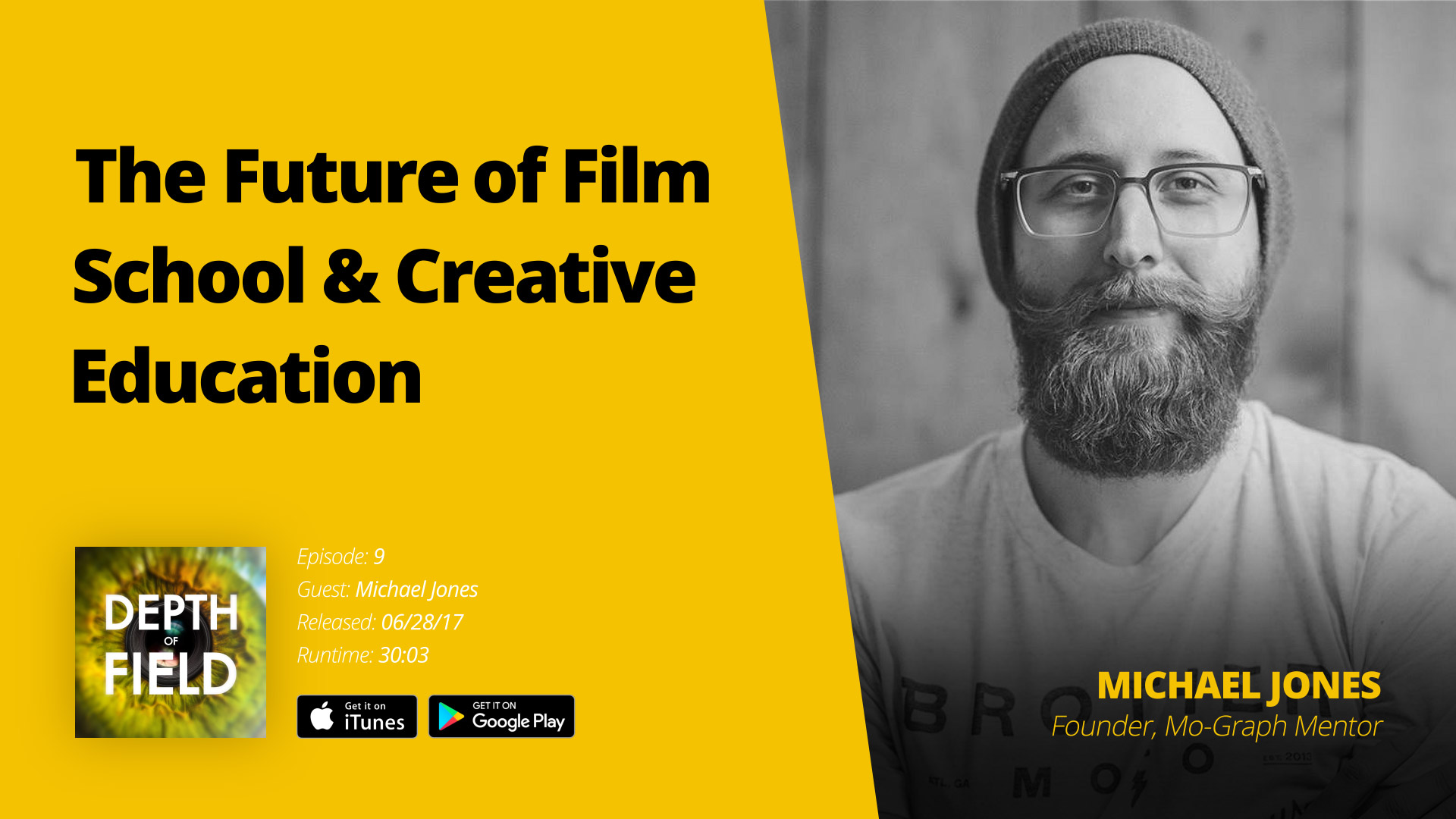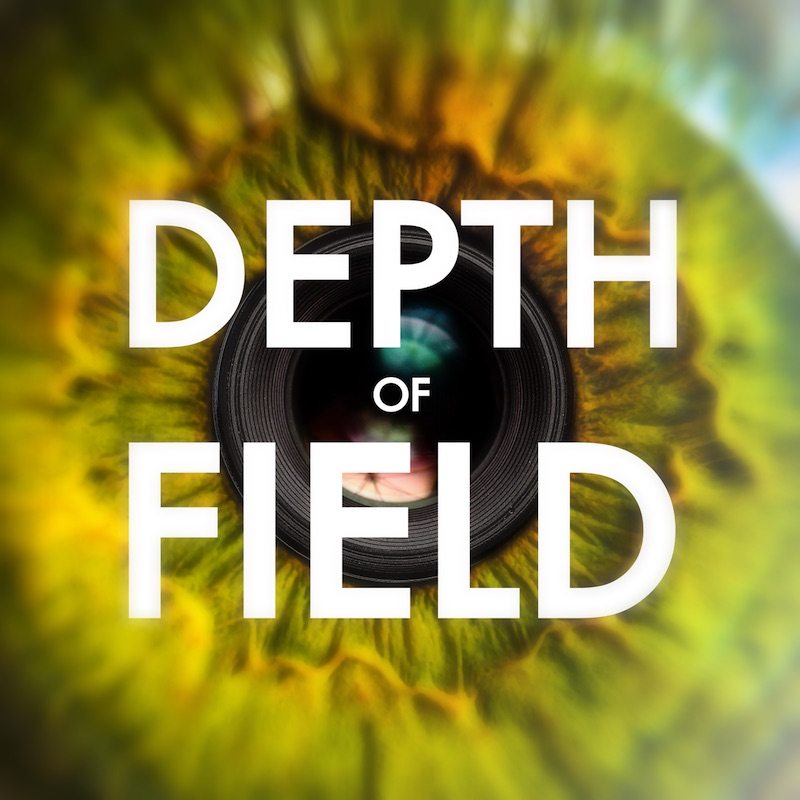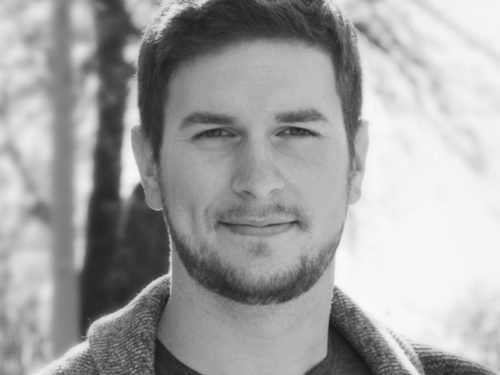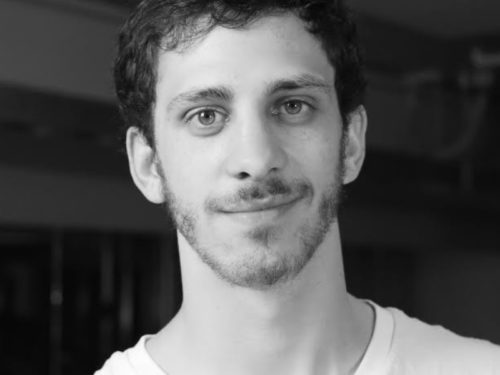
Should you go to film school, or take advantage of new online classes? On this episode, we discuss and weigh the pros and cons of both.
Related Links
Welcome
Adrian Thompson: Alright guys, I’m here with Micheal Jones the founder of Mo-Graph Mentor, very excited to have him here. Mike, thanks for joining us.
Michael Jones: Thank you Adrian, pleasure to speak with you my friend.
Adrian: So, for somebody that’s not familiar with Mo-Graph Mentors, we have a lot of different types of listeners, people in the film industry or corporate video, can you just explain what you’re offering and what you’re doing with your school?
What is Mo-Graph Mentor?
Michael: Yeah. Mo-Graph Mentor is an online school that focuses on motion graphics. So, we try to teach people design, teach people animation, teach people film making and process. And then we try to connect them with jobs at agencies, studios and we call that our job placement program. Our program is nine months long. It contains a live class that runs two to three hours in a small group setting. And if you do the entire program it would take you nine months and cost you $6000. So, we’re trying to offer people a very immersive online experience, not just watching videos, but actually having live conversations, getting critique.
Michael: Really kind of treating it like art school in so far as we can in that format. And then creating that mid level price point of around $6000, which is probably about halfway to the average price of a year of a more traditional art school. Which is usually 12 to 15, but of course we’ve got expensive ones that go far higher. So, there’s a lot of stuff that’s really, really, really cheap and affordable and than a lot of stuff that’s really expensive, but not a lot of mid price point stuff in the sort of art school offerings that students have to choose from. So, that’s kind of where we are.
Michael’s Background
Adrian: Cool. And your background is in design, illustration, and motion graphics as well. I’d love to hear about the process that came to you deciding to start this. How did you see the need and what made you really think this was going to be successful?
Michael: So, I had attended some other online classes. I should definitely say that what we were doing in the format wasn’t terribly novel. There were already a couple other groups and other industries doing these types of small group online critique. Just basically having art school, but doing it through web conferencing and maybe a slack channel and things like that. But we didn’t have it for our niche specifically, in motion design, which were kind of a quirky little … We’re a mix of designers and animators and film makers and we do a little bit of everything.
Michael: So, there was nothing and I would have these conversations with my wife about someone will eventually do this in our niche. And someone really, really qualified and great will come along and they’ll be the ones to do it. And long story short after a few years we said, “no one’s really putting this together, why don’t we be the ones to try to organize it, put together some marketing, and just kinda go for it and have fun with it”. So, that was generally the thought process and so no we’re in year five and definitely glad to have been a part of building this.
Adrian: And you had a passion for education before this, right? Or is this something you kind of had to grow into and learn to love?
Michael: Well, I was briefly an education major, thinking that I wanted to teach, maybe like eighth grade history or something.
Adrian: Okay.
Michael: My mother was an educator, she had taught kindergarten, been involved in early childhood for probably 25 years. And so I’d always kinda been around her classrooms and my father, towards the end of his life, was actually a pastor and those … It’s kind of almost like an educational role as well, where you’re working with individuals and so it’s been a … That was sort of the other part of my life, spending time around that. So, I guess we kind of fall into the things of how our personalities get crafted by who we see as examples and stuff like that. So, I guess I’m a little bit suited, definitely, towards working with people and education.
Adrian: Right. Well, since you’ve been teaching people … Well, how long has Mo-Graph Mentor been going?
Michael: So five years.
Students & The Demands of Practice
Adrian: Five years. Okay, so you’ve been involved with teaching people for five years and I’d love to talk about just some of the common things you’re noticing about your students, if there’s any specific trends. Like, if you were gonna talk to a student that maybe is struggling with certain things and you were just trying to encourage them, like “hey, actually a lot of students are coming at it with these challenges as well”. What are some common things that you notice?
Michael: It’s a good question. I think one thing that’s definitely become clear to me is that people are generally smart enough to understand almost any concept you throw at them. The difference in performance comes based more on conscientiousness and passion and discipline and who does the work consistently the most. Who’s gonna get busy on those off days and not spend four hours a night doing illustration and who is. And that conscientiousness, because people are all so interesting and we have such diversity in the program, people from 70 different countries, speaking different languages even at times, and intelligent, bright, interested people in these materials that we’re talking about, design and animation.
Michael: But then it’s so hard to put the concepts into practice, it takes so long, so many hours in front of the computer. Struggling, wrestling with Photoshop, wrestling with Illustrator. But given enough time, who emerges is like, “wow, look at their portfolio, holy crap, I want to work with them and be a collaborator now”. Versus people who keep stumbling along, not really producing stuff that’s gonna give them break throughs and really give them a great career in the industry. Often times seems to be that conscientiousness of who’s putting in the time and who’s really committed to it.
Adrian: That’s one I wouldn’t expect, but it makes a lot of sense. You can tell somebody how to draw until you’re blue in the face, but if they don’t put in the hours, they’re just not gonna get better.
Michael: Yeah, that seems to be true, I think.
Adrian: Yeah. And are most of your students coming from previous experience or are you getting the impression that these are people that have …
Michael: Usually yeah.
Adrian: Yeah, so they’ve been to an art school?
Michael: We’ve got some beginners, most people have tinkered and even done some projects and watched lots of tutorials. That’s probably the biggest part of the cohort is people who already have a bit of technical knowledge, but know they realize they’re missing a foundation and maybe basic art principles or basic design, or basic film making process. And so they understand software, but they really don’t know what to make or why people make things in certain ways. I think if you wanna really be a high end creative professional you have to have some of that creative director, art director language coming out of your mouth. To work at these really great places, with these great brands, and understand what these brands are after, what these different organizations are after through their communications.
Michael: Art school gives you so much of that. Art school teaches a lot of these people how to talk about work, how to talk about process, how to speak with clients. So, I think there’s a lot of people who have some technical skills and then want to spend time with our mentors. And having that art school experience that gives them just some more polish and some more depth and some more substance to their skills.
Adrian: Yeah.
Michael: That then become very attractive to employers.
Learning from Teaching
Adrian: Right. So, you’re teaching these people all these different skills and I’d love to hear what’s something you’ve learned along this journey from teaching all these people?
Michael: What’s … Well, I’ve learned a lot working with people, it certainly teaches you. Something I’ve learned about myself is that I also need to keep making stuff and becoming a better artist and growing. As the program got pretty big, most of my time became devoted to administrative tasks and marketing and thinking about growing the business and working with students and doing customer service. Which is just like a 24/7 engine once we got this thing going of 50 emails a day sometimes of people that we need to interact with. And so I felt, it was like a two year period where I was not really making that much. I was still doing some client work, but it was all well underneath my skill set, none of it was really stretching me to become a better artist in any way. It definitely got a little depressing where I felt like … Now more this year I’m trying to take more time to draw again and learn more and do more painting and Photoshop and do more interesting animations that stretch me and not just falling back on some of the things I know.
Michael: And maybe you noticed too, just owning your own business and thinking about products, but also still wanting to have that time where you could just zone out and draw for six hours. I’ve realized that I need that or I’m gonna start to hate it. And I’m gonna start to like … Yeah, I don’t just want to be doing emailing all day, every day for the rest of my life. I’ve gotta fit some other moments for myself in there.
Adrian: Yeah, there’s a really good lesson in there. I’ve heard smart business people talk about being humble to the point, understanding they still need to learn. You can’t take the mindset of I’ve made it, I know, and know I just teach people and then they stop learning and then five, ten years, they’re irrelevant ’cause they stopped learning.
Michael: Yeah.
The Future of Creative Art Schools
Adrian: That’s a good lesson. This is the exciting part of the conversation I was looking forward to, was talking about film school, art school as an industry ’cause there’s clearly a change going on with businesses like yours popping up. But there’s still, these film schools and art schools are still in business, they’re obviously, people are going there. And I think it’s a conversation that should be had more because I think the people that go there don’t really know why they’re going there. There’s still this mindset of college is the natural next step to go and the creative services has kind of been lumped into that for a lot of people. So, I’d love to talk about what you think the future looks like, even in the next 15 years for these creative art schools?
Michael: Well, I think you touching on people making the choice to go if they think it’s just a natural progression, the term I like to use is agency. Did that 18 year old really compel themself to make that choice or was it everything around them? Maybe a friend or maybe the guidance counselor, maybe mom and dad just saying, “yes, you go to a four year university”. And for that older generation, when the economics were a bit different and the things that you were learning were a bit different. Most of the things offered in higher education in our parents generation were probably a straighter line into the economy.
Michael: Where as now the liberal arts has really blossomed where there’s all sorts of different offerings of even very minute things that don’t then have a super straight line. So, I know we have a lot of kids that are just going into it, so I think that’s a really important point. And especially in art school because if you’re gonna go to a really expensive, private four year art school you really had better belong there in the sense that your really going to make a career in the creative arts. You really intend to make maybe $130,000 a year after six or seven years of experience, not at first. But you see that grade in of I’m gonna make $60,000 when I come out of here doing something junior level or even $45,000 maybe. But after five or six years I’m gonna have that creative director, art director, I’m going to be a real substantive player in this and I’m gonna make a lot of money. Well then okay, amazing decision, go to Art Center, spend all the money. ‘Cause you’re gonna make, then, millions of dollars, hopefully, over the course of 30 years of being really productive and prolific and loving your career.
Michael: And that’s great for those people and I’d say probably 20% of people are probably in that group. They’re high achievers, they’re really serious, they’re gonna put in the time. They’re gonna become a character animator and go to Disney and make lots of money and pay it off by the time they’re 35. It’s like okay, then the model isn’t that terrible. But for other students … Right, if they just showed up and thought maybe this is a good idea, maybe I’m interested. Well, there can’t really be a maybe if the price was $40,000 net. I think Art Center’s like $39,000 net for one year. Then you really shouldn’t be testing it out if you’re gonna spend that amount of money. You should be doing Mo-Graph Mentor or School of Motion or watching tutorials or doing your own projects.
Michael: ‘Cause the only people I would ever think are making a sound decision is gonna be those top 15, 20% players. They’re gonna have great jobs, go to great agencies, and make amazing work because there’s certainly no denying that what places like Art Center offer is amazingly transformative. To go and be amongst these brilliant artists and designers with decades of experience. It really is a massive shortcut for the kids who are really gonna take it seriously and embrace it. But for Joey Korenman of School of Motion even speak about, like at Ringling, the number of students that would show up and not do the assignments and just putter around and maybe they were just having some beers on the weekend and they’re not really serious. But there’s a $35000 debt with interest that’s now tied to these people. And so that goes back to your point of agency. Did you decide to even be here? What the hell are you doing here? This is costing you, this is gonna cost you for decades. You’re making a huge mistake.
Michael: So, I think when I think about current higher education, I’m thinking about the different groups of people that it really is right for. And then other people that are maybe on that fence and then maybe we know that 30% of students don’t even make it to sophomore year. So, right off the bat if we have 2.1 million kids in every American high school cohort yearly. That’s like 100,000 kids who go to university and after one year they leave and they don’t go back. And so for those kids, we need a whole host of alternatives and online education is obviously gonna be a huge part of that. But I’d love to see the big schools offer a softer gradient to some of these kids. If I’m Ringling I would think, “okay, if I have 30% of kids flaking out on this thing, maybe I need to be offering some real intermediate steps to help weed out people or let them get a sense of it either by offering an online class or maybe running a summer program that’s three months that costs you a few thousand dollars to protect these kids from themselves, almost”. I’d actually like to see more of that.
Michael: But again, it comes down to incentives. What is there incentive to protect these people from themselves versus just saying, “hey, you decided to be here, you borrowed it, so come on in”. So, I think it’s a danger to many students that they should choose very wisely, but it’s certainly not a 100% no for me, that you shouldn’t go to art school. But I think for most people, were gonna need all kinds of alternatives. So, I’m excited about Mo-Graph Mentor and all the other offerings that will help people just make better decisions when it comes to trying to learn and trying to create a career for themselves.
Adrian: Right. Yeah, the financial issue, it seems that there’s too much of a disconnect when you take a loan. You just don’t take the money for what it is, it’s too casual.
Michael: Yeah, that’s a big psychological problem too, right? The third party payer problem of when someone else is footing the bill, we fundamentally behave differently. And I think that’s pretty well documented, even like psychologically about us. So, yeah I think that’s a big part of it.
Adrian: I think we should talk about, you mentioned the teachers being a valuable part of these schools. And I was thinking as you said that, that honestly, the people you have teaching, there could be a point made, that they’re more attractive to learn from because you’re getting people that are in the prime of their work life. And their taking time away to teach current trends, current things that are happening in the industry, where as people at colleges seem to be people that they had their career and now their deciding to teach. And in my mind you could make the point that they’re kind of like, they’re done, they’re career’s kind of over and now they’re gonna teach people. And the people that you’re having teach now might do that in the future, but there’s a point to be made that you could be considered more relevant.
Michael: Yeah. I think you would be happy to learn, as I have, that a lot of these schools are trying to keep their teaching costs low by using adjunct faculty. Meaning people who do work full time and then come in just to teach the class. So at a place like Art Center one of your teachers is Chris Doe, he teaches there adjunct. So it’s like you’re getting studio owners and very legit people that are on the cutting edge actually coming in. Now I can’t … That’s not every school and I think to your point there are many, many more institutions that did have someone who had a very short career and then came in and is now just faculty.
Michael: And that I agree is a problem and I think those programs that do that will find it’s a problem over time and be penalized by people drifting, like you’re saying, towards the working professionals who they already … Say like, well I want my work to be like that, so I’m gonna trend in that direction. And that’s what’s so exciting about now any great artist being able to create an educational offering. Like Ash Thorp with Learn Squared, how he’s bringing various really, really high end working artists bringing their work flows and information right to students. So I think your point is definitely true.
Social Benefits to Formal Education
Adrian: Cool. Another benefit to going to college would seem interacting with peers and making connections for your professional life. But do you notice that happening in your online classes? People are being introduced and they stay in touch digitally, we’re all so used to that anyway. Does that seem to be going on?
Michael: Yeah, no 100%. And that is a huge part of the offering of a university. And that’s also what I like about what we do with live classes because there’s almost like a problem with terminology because a lot of people will have an online school that’s just video, it’s like a video series. Where you don’t really get to know your peers who also took the class, you’re just in different parts of the world and you happened to have watched the same video and maybe you had a short comment thread. But that’s not really the same as spending three hours in a web conference talking about your kids and where you live and how’s it going and really getting to know people. So the kind of intimacy that builds with all the face time that we spend together in these small groups is an amazing part of it.
Michael: And when we first were putting the program we literally asked ourselves to deconstruct the value proposition of an art school, of a place like SCAT. And a huge part of it is the peer to peer connection and that’s what convinced us to try to put that at the center of the way that we were doing this projects, putting people into small group settings because … Right, it’s like university should teach you knowledge, help you contextualize it. And like a larger liberal arts education, it should connect you with your peers, and then it should help you advance your career. And so when we started, we said, “well we can do all that, that’s not really a question of format”. It’s like we can still have those same goals as the art school and go about it digitally.
The Motion Graphics Industry
Adrian: Well, lets switch to talking about the motion graphics industry specifically. I’d love to hear your thoughts on competition, pricing, expectations from studios, and technology. And we can just take those one at a time, but just going through the list of things that are clearly being effected and changing on an almost weekly basis.
Michael: Yeah. There’s a lot of other people that could speak to this better because I’ve had my head down with online education for so long and I don’t run a studio. I definitely do freelance work. For me, I’ve not witnessed a huge change. I have a small network of clients that, who’s needs right now are very similar to what they were four or five years ago. A lot of web stuff, a little bit of broadcast stuff. You’d have to ask somebody else about the demands on studios. I mean from my perspective I feel like more people are freelancing. I’ve definitely witnessed of people not really wanting to work at studios as much.
Adrian: How about in terms of your students finding jobs? Is there a strong demand because of that trend that you’re seeing? That studios are trying harder and harder to employ talent?
Michael: Yeah, it might just be my narrow perspective on it, but I see most of our students going on to freelance and a smaller hand full choosing to take full time positions. And a lot of the positions I do see are in LA and then Silicon Valley at the big tech companies. And then just a lot of freelancers and kind of smaller studios as well. You would probably need somebody else to speak to the larger industry trends and the Oddfellows guys had a lot of insight at Blend, talking about … If you listen to Chris Stone, you listen to those guys, it sounds like they’re telling us that demands are about where they were and budgets are potentially shrinking.
Michael: And the way that studios are surviving is with very unique, evocative, visual work. It has to be very high end. You see the stuff these people are doing for Google and stuff, with really complex character animation, really, really beautiful evocative design. It seems that the best thing to do is just be cream of the crop visual artists. That’s about the only security left because then everyone else is … It seems hyper competitive for more like simple explainer videos that anybody could do.
Adrian: Yeah, that’s exactly what I’m noticing. That the middle of the spectrum is being squeezed out, almost like the middle class, right. ‘Cause there’s either a client that money almost isn’t an issue or there’s a client where they want to spend the least that they can. And there’s a lot of competition on the low end of artists in India or Brazil and they’re creating these companies, like trying to do videos for $500. But these other studios, they’re not gonna play just a few steps above that, they’re going for like, no we wanna go for the people that we can throw 20, 30, 50,000 and our clients don’t blink. ‘Cause we’re gonna do the best possible work. And that’s what I see, trying to play in the middle ground is gonna get harder and harder. Where as your just gonna have to be at the top of the game or you’re gonna be doing bottom of the game. ‘Cause staying in the middle’s gonna be very tricky.
Michael: Yeah. I also see a lot of really promising technologies and web applications that might drop a bit of a bomb on the bottom end of the explainer kind of market.
Adrian: That’s true.
Michael: And that is obviously speculative, but I think it will be interesting to see of where we are in 10 years. If it’s like, it would almost be unheard of to pay someone for the $5000 explainer video because there’s some $19 a month AI box that can pretty much mimic what we were doing.
Adrian: That’s right.
Michael: With the explainers and with just icons and texts and stuff. Some of it isn’t that complicated it would seem to reverse engineer. That could be a problem as well. But again it’s like originality is this golden thing, that’s the value now. That’s the value is being different, having a point of view, having a perspective, having artists that no one else has, and making great, great work.
Should You Apply to Mo-Graph Mentor?
Adrian: Very true. What would you say to somebody who’s on the fence? If they looked at Mo-Graph Mentor and they’re an aspiring motion graphics artist. What would you ask them to consider or a prerequisite you think they should have mentally before diving in?
Michael: I would say that Mo-Graph Mentor is for people that feel pretty certain that they want to do motion design in some flavor as a career. Because again, each class is $2000, so it’s not cheap, it’s a real commitment. The other thing we would say is to make sure that you can block out time for each three month class. Meaning you really are gonna commit an extra 15 ish hours a week to illustrate, to story board, to work on your scripts, to work on your art direction. Because we are project based and the only way to get better is to make lots of work, to be pushed, to force yourself to refine your work and your ideas, and have to present those ideas to other people and get their feedback and direction over time. So, we just want to work with passionate students that are willing to have the deep conversations about their work. Not people who are just interested in maybe just learning the technical part of the software because that is kind of a second tier thing for us. We go and find technical solutions as our subject matter demands it and as our art direction demands it. So, that would be a quick way to be disappointed with us is if you really just want to know about key framing or plugins or something. That’s kind of on the second tier for us.
Adrian: Yeah, relating that to the last question, you guys aren’t just teaching them the basics so that they can make an explainer video. You’re primary is teaching them visual art concepts that are gonna give them the skills on the path to being at the top tier.
Michael: Yeah.
Adrian: That’s what your goal is. I think it’s an important distinction to make because that, in my opinion, is what justifies the cost because you’re not setting them up to be at the bottom. You’re setting them up to shoot for the top tier.
Michael: Yeah, I mean when we first began and I would look at the curriculums and I would look at the accreditation boards. So, the National Association of Schools of Art and Design, NASAD, is the accrediting body for many of our art school institutions, our four year schools. And they set out some pretty simple guidelines for kind of what it means to shoot for that top. And that is what we took as gospel was to say this is about being visual artists and this is about the history of visual art and this is about ourselves as people and deeper concepts. And I think it gets simplified into saying creative directors and art directors. Given enough time, I feel like, is what the big art schools can really, uniquely give and so we wanted to just go right after that. And that can be sometimes chaotic and open because we’re having students present their ideas and their films and they’re each growing as directors at sort of different rates.
Michael: But we’ve really proven to ourselves now, I think, that the essence of how we really begin to think that way about our work is through the hours and hours and hours of making work and talking about it and having conversations. And then centering it around a curriculum of really solid technical theory. Understanding design principles, understanding the basics of visual art.
Wrap Up
Adrian: Awesome. Alright Micheal, we’ll go ahead and wrap this up for you. One thing I like to let people do before we do that is just advertise where people could get in touch with you. Obviously, we’ll link to Mo-Graph Mentor, people can check that out. But which social media would you want people to find you on?
Michael: Yeah, so I’d say check out mographmentor.com. Me personally, I have, I feel like 90% abandoned Twitter, but …
Adrian: Me too.
Michael: I’m MichealJones7 on Twitter. I’ll probably come back to it one day, but I’m having a nice time of ignoring it right now.
Adrian: Good. Very good. And then one thing I always ask our guests before we go is what is something our listeners should do to improve this week?
Michael: Well my father always said pushups were the best exercise ’cause it works the whole body, so do some push ups.
Adrian: That’s a good one. Alright, nobody’s done that one yet, so that’s really good. Well Micheal, thank you so much. It was a pleasure to talk with you and I appreciate you sharing your time with us.
Michael: Yeah absolutely, thanks man.








0 Comments